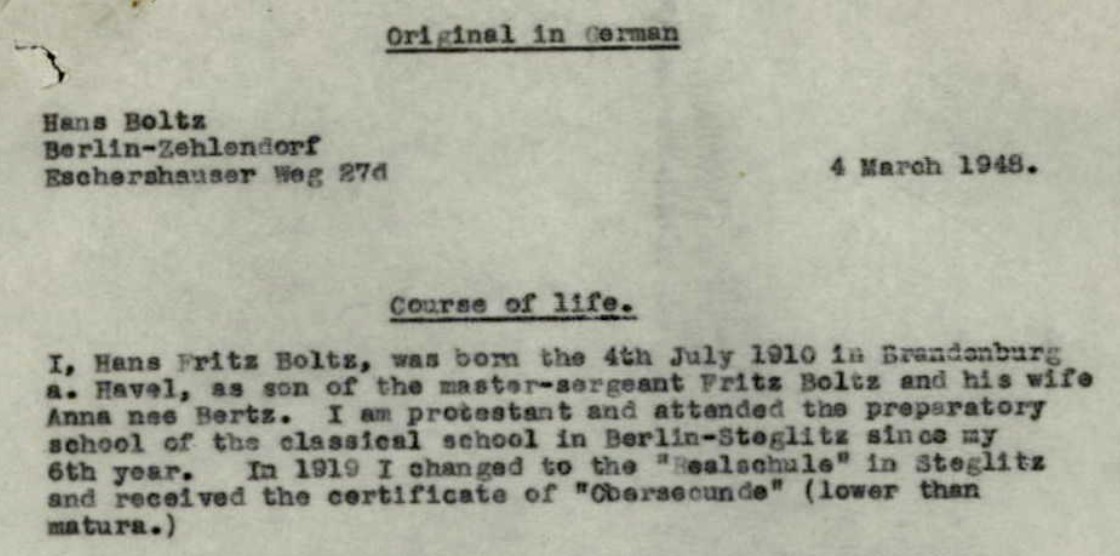Since I have German ancestors I am very pleased that so many German birth, death, and marriage certificates are being digitised and made available.
However, well into the twentieth century German printed documents used the so-called ‘blackletter’ typeface, and this is difficult for an inexperienced modern reader of German to understand. The handwriting of the clerks who filled in official forms is often also quite hard to read.
Software has been developed to help readers with these documents. Transkribus, for example, is a platform using Handwritten Text Recognition (HTR) technology for automated recognition, transcription, and searching of historical documents. Website: https://readcoop.eu/transkribus/
Transkribus has handwriting recognition for in many languages, not just German. The developers are even experimenting with methods of reading ancient Chinese documents.
This 10 minute video gives an idea of how the software is being used to make archive records more accessible: Transkribus: AI-based recognition of historic handwriting
Karl Gustav Grust (1839 – 1901) was one of my third great uncles. I recently came across his 1901 death certificate, and I wanted to know what was recorded about his parents. I was struggling to understand the handwriting.

I decided to try the Transkribus software. If you scroll down the webpage at https://readcoop.eu/transkribus/ you come across this
trial-run facility.
I downloaded the image of the death certificate and uploaded it to the page. I left the model option as “Transkribus German handwriting M1”
I immediately received the following text:
C.
No. 1151.
Bambung am 17. Mai 101.
Vor dem unterzeichneten Standesbeamten erschien heute, der Persönlichkeit
durch Geburts
shanen
der Lehrer Austar
Grust
Hamburg, Bussestrafe 25
der Privatier
Karl Gustav Grust,
61 Jahre 11 Monat lutherischer
Hamburg Bussestraße 23
Men Nuppin, verheirathet
mit Johanna Mean Cäroling gebe
renen Peper, genannt Rathje
Sohn er verstorbenen Eeleute,
Tuchmachers Gustar grust und
Wiemimine geborenen
Hl2G
Banbg, in seiner Wohnung,
fünfzehnten Nai
des Jahres tausend neunhundert l
sechs
N
woen e, und zwar indes Anzeigenden
Gegenwarte
Vorgelesen, genehmigt und unterschrieben
Gustav Grust
der Standesbeamte
Pramer.
ne aeerre
m
The transcription is not perfect but for me it is much better than being bamboozled by the handwriting. What I was particularly looking for was my great-uncle’s father’s occupation. The document confirmed this as ‘Tuchmacher’, cloth maker.
I had a quick try at correcting some of the transcription, which left out many of the proforma headings. I have shown the form details in bold font and corrected handwritten transcription in bold plus italic.
C.
No. 1151.
Hamburg am 17. Mai 101.
vor dem unterzeichneten Standesbeamten erschien heute, der Persönlichkeit
nach ??? GeburtsShanen??? ??? kannt,
der Lehrer Gustav
Grust
wohnhaft in Hamburg, Bussestrase 25
und zeigte an, daß der Privatier
Karl Gustav Grust,
61 Jahre 11 Monat alt, lutherischer Religion,
wohnhaft in Hamburg Bussestraße 23
geboren zu Neu Ruppin, verheirathet
mit Johanna Maria Carolina gebe
renen Peper, genannt Rathje
Sohn der verstorbenen Eheleute,
Tuchmacher Gustav Grust und
Wilhelmine geborenen
Berg
zu Hamburg, in seiner Wohnung,
am fünfzehnten Mai
des Jahres tausend neunhundert ein
??? mittags um sechs Uhr
verstorben bei, woen e, und zwar indes Anzeigenden
Gegenwarte
Vorgelesen, genehmigt und unterschrieben
Gustav Grust
der Standesbeamte
[signature]
This roughly translates using Google translate:
Hamburg on May 17, 101. Before the undersigned registrar appeared today, the personality after ??? birth ??? ??? know the teacher Gustav Grust lives in Hamburg, Bussestrasse 25 and indicated that the privateer Karl Gustav Grust 61 years 11 months old, Lutheran religion, lives in Hamburg, Bussestrasse 23 born in Neu Ruppin, married with Johanna Maria Carolina Born Peper, called Rathje son of deceased spouses, Clothmaker Gustav Grust and Wilhelmina born Berg to Hamburg, in his apartment, on May fifteenth of the year one thousand nine hundred one ??? at six o'clock in the afternoon deceased at, woen e, while indicating present Read out, approved and signed Gustav Grust the registrar [signature]
It took some work to make the additional corrections but it was much easier to work with the beginning transcription than to start from scratch. Transkribus is not perfect but thanks to it I now have the gist of the meaning and enough information to continue the family tree.
Related posts:
Wikitree: Karl Gustav Grust (1839 – 1901)






































